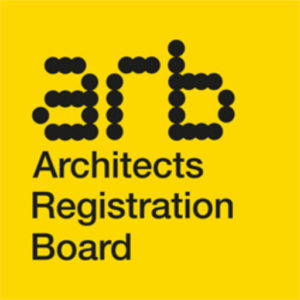For those considering a career in architecture
Qualifications and training
Architecture in the UK is a regulated profession which means that you must be registered with the Architects Registration Board (ARB) to practise using the title ‘architect’. Membership of a professional body is optional but not a substitute for registration.
ARB is the statutory regulator and competent authority for architects in the UK. As a regulator it is ARB’s role to maintain the Register of Architects and to ensure that standards within the profession are consistently maintained for the benefit of the public and for architects.
There are three main routes to registration, but typically, if you are studying in the UK, you will:
- take a three-year full time first degree in architecture (often referred to as ‘Part 1’)
- followed by a year of appropriate professional experience
- then a two-year full time second degree or diploma in architecture (often referred to as ‘Part 2’)
- followed by a further year of professional experience
- then the Professional Practice Examination – or Part 3
You will need to have all three qualifications in order to apply for registration together with a minimum of 24 months appropriate practical training experience.

Choosing a course
It is important that you choose qualifications that are recognised by ARB. ARB only prescribes, or directly recognises, qualifications in UK institutions, and those recognised or validated by other bodies will not be acceptable for registration unless they are also recognised by ARB. (There is provision under European Legislation for the mutual recognition of qualifications within the European Economic Area (EEA) which applies to qualifications listed in Directive 2005/36/EC. If you are thinking of studying in another European state, please contact us for more information.)
Although each course is designed to meet the Board’s Criteria at the appropriate level, teaching and assessment methods and the range of options available will vary so you should look at these carefully before making a decision about which course to follow. In addition, each institution sets its own entry requirements in terms of subjects to be studied and grades to be achieved and you are advised to contact admissions tutors or course leaders for advice and further information.
Generally, for entry to university you will need Maths and English at GCSE grade C or above but other subjects required at either GCSE or A level will vary from institution to institution. Because the study of architecture is a combination of arts and sciences, universities usually like you to have studied a range of subjects. Some will ask for A level Maths and/ or Physics and most prefer you to have studied Art or another design-related subject.
The quickest route (a minimum of seven years in total) is by full time study but there are a number of part time courses available which will take a little longer. There is also an office-based course for those who have some experience of working in architectural practice and prefer to continue in employment while working towards their exams.
ARB does not require that you take Parts 1, 2 and 3 sequentially (in other words, that you have a Part 1 qualification before enrolling on a Part 2 qualification and so on) but many schools will require this and you should check on their individual entry requirements/entry policies. You will, however, be required to have all 3 qualifications in place in order to apply for registration.



Changing your career
If you have trained in another discipline or worked in another field and are considering becoming an architect you will still need the academic qualifications (i.e. Parts 1, 2 and 3) and 24 months of appropriate practical experience.
It is not possible to substitute employment experience for academic qualifications but if you have a degree in a related subject you may be able to reduce the total time spent in study by applying to the institution for credit for prior learning. This is more likely if you are applying to study at Part 1 level and if your qualifications are closely related to architecture. This provision will vary from institution to institution so it is worth contacting more than one if you don’t receive a favourable response initially.
Institutions usually have more flexible entry requirements for ‘mature applicants’ (those over 21). Again, you should contact individual institutions to find out how they can help if you don’t hold the qualifications usually asked of school leavers but they will generally ask for some evidence of design ability in the form of a portfolio of work.
Access courses are available at some universities which allow those without formal qualifications to prepare for study at degree level. Foundation degrees are for those in work and/or who have completed a level 3 qualification such as an apprenticeship. From a Foundation degree you may be able to progress to a prescribed Part 1 qualification. Again, you may have to negotiate your entry level and this will depend on the content of your Foundation Degree.
Study outside the UK
The ARB does not directly prescribe, or recognise for registration purposes, any qualifications outside the UK. While study outside the UK may be beneficial in terms of widening your experience you need to be aware that if you hold overseas qualifications and you wish to register in the UK, you will need to take the ARB Prescribed Examination for Equivalence to Prescribed Qualifications at Part 1 and/or Part 2. This is the means by which the Board assesses whether an individual has acquired the same level of skills and knowledge as someone who holds a prescribed qualification at the same level.
There is a fee for this examination and candidates are eligible to take it at Part 1 if they have gained a non-prescribed qualification in architecture at first degree level after completing a course of at least three years’ full time study or the part time equivalent.
For Part 2, candidates must hold a non-prescribed qualification in architecture at second degree or diploma level which was awarded following at least two years of full time study or the part time equivalent, and which was taken after being awarded a qualification in architecture at first degree level.
If you have studied architecture together with another subject, you may be eligible to take the examination(s) but if you are in doubt or have any questions about eligibility, you should contact the Registration Department.
There are different provisions for study within the EEA. If you wish to study in another EEA country and need further information, please contact us.

